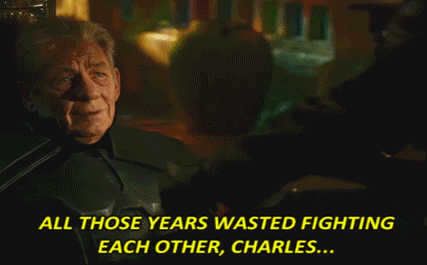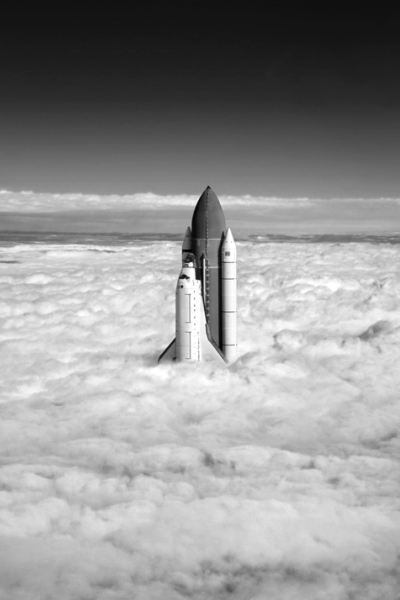When my webmaster Jack first shut off my back-end access to this blog last summer in a last-ditch effort to keep the old server running just a little longer (details here, if you don’t know what I’m talking about), I underwent an emotional process not unlike the Kubler-Ross stages of grieving. At first, being unable to post was a major frustration. I’d see an article or something I wanted to share, or I’d have an experience or otherwise think of something I wanted to blog about, but I couldn’t. I was suffering from bloggus interruptus… blue blogs… I’d been blog-blocked. You get the idea. (I know, I know, I could have written the entries in Word or something and posted them later, but for various reasons, I didn’t. And anyhow, I’m trying to develop an idea here, people!) But after a couple weeks of bloglessness, the irritation started to fade. In fact, I began to feel… relieved. As if I were on vacation. I noticed parts of my brain and body relaxing that I hadn’t even realized were tense as it gradually sank in that I was free. Free of the nagging sense of obligation that comes with running a blog, the feeling that there’s this gaping, grasping, begging, mewling, insatiable maw out there, eternally hungry for fresh content and single-mindedly focused on the now, and that I, as the sole proprietor, have to constantly produce in order to feed that thing. I’ve struggled a lot with that feeling in recent years as I’ve gotten busier and had less time for blogging. I hate to say it, but what was supposed to be an outlet for my writing urge and a harmless little hobby — what was supposed to be fun — eventually became a huge source of stress and anxiety for me. But then, I should’ve expected that. The same thing happened, more or less, with the offline, paper-based journals I used to keep back in my pre-blog days. I dug myself into quite a hole with those; at one point, I was literally months behind but obsessively unable to just skip to the present and forget all the stuff I hadn’t gotten around to writing about yet. I had to catch up… and circumstances were making that more and more impossible with every passing day. The anxiety of constantly feeling like I couldn’t catch up — like I couldn’t keep up — became so bad I finally had to abandon journaling altogether; I just couldn’t go on feeling like such a miserably inadequate human being any longer. And to be brutally honest, I had begun to feel that way about this blog, too, before the crash… like it would be better to just walk away rather than keep tormenting myself about my inability to stay timely.
So, yeah… the break was nice. Nice enough, in fact, that I’ve been having trouble getting back into the swing of regular blogging. You may have noticed.
It’s not that I don’t want to do write in this space, or that I can’t find anything to write about. (That’s never been a problem, believe me!) But the urgency I used to feel seems to have dissipated, and I don’t know if it’s going to come back. I used to feel compelled to stay up ’til the wee hours hammering out the entries; lately, though, I find myself thinking it can wait one more day. Thinking I’d rather go fire up the BluRay player, or work on one of my many other long-neglected projects, or just get the damn dishes done so I can enjoy a clean kitchen for a few minutes. It doesn’t help that I really wonder these days if there’s any point anymore, now that the heyday of blogging seems to have come and gone.
Mental vacation and navel-gazing meta discussions aside, though, there is a downside to being out of the saddle for so long, and it’s this: there is a significant chunk of time for which I don’t have much of a record, and some pretty major things happened during the blackout period that I’d like to remember. This blog was never intended to function as a diary, but it has often ended up serving that purpose; without it, all I’ve really got of 2013 is some cryptic notes on an outdated wall calendar I’m ready to recycle. (I did talk about some of this stuff on Facebook, but given the lack of a decent search feature for old posts on that platform, as well as its notorious tendency to change for no good reason other than the need to justify the programmers’ salaries, I don’t think that place counts as any sort of documentation.) So, if you’ll bear with me, I’d like to note the highlights of 2013, as copied from my calendar (I’m including items from the entire year here, as there were things even before the blackout that I didn’t blog about):
1/22/2013: Shatner’s World: We Just Live In It
William Shatner’s one-man stage show is a hugely entertaining journey through the Shat’s life and career, narrated with nearly equal amounts of pathos and self-deprecating humor. Shatner has a reputation for being an egotistical ass, and he certainly can be, but he strikes me as far more complicated than merely that. This show seems to get closer to the truth of the man than any of the other autobiographical works he’s written (he’s done several), and that truth is often very sad, frankly. Honestly, I don’t know that I actually like William Shatner, even though I’m a huge fan of his work. But I do find him an immensely sympathetic figure… even a tragic one, in some sense. This show was recently presented in movie theaters across the country in a one-night-only event; I’m hoping that event might lead to a DVD/BluRay release…
2/22/2013: Birthday party for the Wade twins
Over 21 years have passed since I quit my job at the multiplex movie theater where I worked during my highly impressionable college-student years, but I remain inordinately fond of the people I knew there, as well as deeply nostalgic for that whole period of my life. So naturally I was deeply pleased to get an invitation to a surprise 40th birthday party for the Wade sisters, who were among my favorite candy girls back in the day. The event was a bit awkward, since I didn’t really know anyone there other than the twins’ older sister and one of my fellow “Dudes” who came with me, but the expressions on their faces when they recognized a couple of theater people made it all worthwhile. I’m only sorry I had to miss a similar party earlier this month for another of the concession-stand crew, the lovely Krickett, who I wrote about last year.
3/6/2013: Jen Larsen’s book launch party at The King’s English
My friend Jen wrote a memoir. She launched it at a local bookstore called The King’s English, and Anne and I were there. Jen seemed happy to see us, and the book was a big success. She’s now working on a Y/A novel, I believe…
3/23/2013: Mummies of the World exhibit at The Leonardo
At one point, it seems like Anne and I were going to “event exhibitions” at our local art museums every other month… exhibitions about the Etruscans and Masada and the bronzes of Rodin and the art of the Muslim world… I loved those things, because they appealed to my Indiana Jones fantasies and made me feel like a sophisticated man-about-town. But that whole scene eventually proved to be a sort of fad, and inevitably it petered out. Mummies of the World was a throwback to those heady days, and a pretty fascinating one too, the takeaway of which is that there are great many more types of mummies, both natural and otherwise, than just Egyptian ones. If you don’t know about it, The Leonardo is the former Salt Lake City Public Library, now reborn as a science and technology museum.
4/10/2013 ON3 at Liquid Joe’s
Anne’s former coworker Gary plays guitar in a rock band called ON3. They landed a gig at a local nightclub, and we went to check them out and provide a little moral support. They’re pretty good… and even though I was never a big clubber back in the day and haven’t set foot in one in years, it was cool to go out to one again, at least for one evening…
4/13/2013: dinner with Travis and Ellen
Old friendships are curious things. You go for months, even years, without seeing someone, then suddenly something will remind you of how long it’s been and you get together and have a wonderful time… and then another year passes.
4/20/2013: SLC Nerd w/Ted Raimi
My friend Ben Fuller helped launch SLC Nerd — a small, one-day sci-fi/fantasy/comic-book convention — several years ago, but in spite of his annual invitations, I never managed to go before last year. I should’ve made more of an effort, as it turned out to be a fun use of an afternoon, and I got to meet B-movie actor Ted Raimi, probably best known for playing Joxer the Mighty on television’s Xena: Warrior Princess, as well as the brother of director Sam Raimi. (For what it’s worth, he seemed like a really nice guy.) It’ll be interesting to see how (or whether) SLC Nerd goes forward now that a two-ton gorilla named Salt Lake Comic Con has arrived on the scene; my sense is that last year was a sort of watershed for Nerd, which finally broke through and garnered some attention, only to have SLCC show up in the fall and suck all the air out of the room. I hope I’m wrong about that…
4/25/2013 – 4/29/2013: San Diego vacation
Great little weekend getaway for Anne and me, during which we visited our friend Jeremy and celebrated 20 years as a couple. If you find yourself looking for dining options in San Diego, I recommend Vigilucci’s on Coronado, which really made a nice fuss over our anniversary and was delicious to boot.
5/18/2013: Laura’s skating show
Our friend Laura ice-skates. We watched her show her stuff.
5/22/2013: Alleigh’s graduation
Anne’s niece Alleigh, whom Anne thinks of as her “mini-me,” graduated high school, thus making Anne and me officially old. Thanks, Alleigh.
7/5/2013: Pat Benatar and Neil Giraldo concert
With all the ’80s bands touring on the nostalgia circuit in recent years, I’ve been able to catch pretty much all of the acts I wanted to see back in the day but never did, with only a small handful of exceptions (I’m still kicking myself for deciding Tina Turner’s farewell tour was too expensive when it passed through SLC a few years ago!). Pat Benatar was the last artist on my “A list,” i.e., the “must-sees,” so when I heard she was going to play the Cache Valley Cruise-In — an annual weekend-long car show my parents always attend, and which Anne and I often go to as well — it was a no-brainer. I’m pleased to report that not only did I get to cross the last name off my list, but the show turned out to be absolutely fantastic, easily one of the best concerts I’ve ever seen. Pat and Neil — her longtime guitarist and husband — are personable, funny, and highly entertaining, and those famous pipes of hers haven’t lost one iota of their power. I really should write a complete entry about this show, actually; I liked it that much.
7/23/2013: Huey Lewis and the News concert
Anne and I saw Huey and the boys out in Wendover a few years ago; sadly, we weren’t too impressed on that occasion. Huey’s voice was weak, and they were too focused on new, unfamiliar material, so I was hesitant to see them again. But they were my buddy Jack’s favorite band, and this tour was built around performing the entire contents of their breakthrough album Sports, which was commemorating its 30th anniversary last year, so we agreed to take another chance. Huey still struggles with the higher notes these days, but whether it was being in the company of friends or the playlist, we had a much better time.
7/26/2013 – 7/28/2013: Wells Fun Run
Another summer, another weekend out in boondocks of Nevada, watching my dad show off.
8/24/2013: Dave and Amber’s wedding
And here we get to one of the main events of 2013, the marriage of two of “The Usual Suspects,” the circle of people who have become Anne’s and my primary friends over the past decade. Getting married at Tuscany, a fancy Italian restaurant tucked into a secluded corner of the valley, was unconventional yet very classy and beautiful… just like the bride and groom. Anne and I were honored to be such a large part of the proceedings.
8/29/2013: Chris Isaak concert
Chris Isaak performs somewhere in the Salt Lake area nearly every year, and Anne and I have been trying to catch his show for years, but somehow something always gets in the way, or the shows sell out too quickly, or something. Finally, though, we and our friends Geoff and Anastasia managed to see him… and it was worth the wait. A great show. He actually reminded me quite a bit of my Main Man, Rick Springfield, in the way he interacted with the audience, made self-deprecating jokes, and generally appeared to enjoy playing as much as we enjoyed watching. I’d definitely see him again… assuming I can get tickets!
9/5/2013 – 9/7/2013: Salt Lake Comic Con
Anne and I have heard tales of the legendary San Diego Comic Con for years, but we didn’t have a lot of confidence that Salt Lake’s first one would amount to much. We went to it out of curiosity as much as anything, figuring we’d better enjoy it because it would likely be the last. Boy, did we misread that one! Turns out, there are lots of nerds along the Wasatch Front. SLCC was the biggest-ever first-time Comic Con, the fourth largest one nationwide (they hold them in many cities besides San Diego, if you don’t know), and the largest convention of any kind to ever hit Salt Lake City. It was successful enough that the organizer, Dan Farr, is trying to hit the jackpot twice this year, with the just completed SLCC FanXperience (FanX, for short) and the second regular Comic Con coming up in September. I remain dubious about whether this market can support two of these things a year — Anne and I decided to attend FanX, but likely won’t go to Comic Con in the fall, because of the expense — but we’ll see…
9/21/2013: Steph and Mike’s wedding reception
Two more old friends tie the knot… 2013 seemed to have a definite theme…
10/4/2013: Rick Springfield concert
The annual overnighter to the Nevada/Utah border to see my Main Man with our friends Jack and Natalie…
12/5/2013 – 12/9/2013 Thunderhill
Now here was something different: a road trip with my friend Mike Gillilan to photograph (him) and write about (me) an endurance race called 25 Hours of Thunderhill. We drove from Salt Lake to Willows, California, in a crappy little rental car, shared a hotel room, ate too many In n Out burgers, slept way too little, and generally had ourselves the sort of adventure middle-aged farts like us rarely do. My coverage of the race for The Daily Derbi blog can be found here, here, and here, and a gallery of Mike’s photos from the race is here. My own snapshots from the event can be viewed on Flickr.
12/28/2013: Dudes Reunion dinner
Continuing a tradition of nearly a decade, I got together over my holiday break from work with some of “The Dudes,” the guys I used to work with at that multiplex I mentioned earlier. It was only four of us this year, but it’s always good to see the old gang… even if there are a lot of topics we really should avoid these days!
And finally, there was… this:

Yes, that’s exactly what it appears to be, a pic of me dressed like Sonny Crockett, officiating at the wedding of my good friends, the aforementioned Geoff and Anastasia (this happened on 9/14/2013, just for the record). Like several of the other items above, this is something that really deserves its own complete entry, because performing a wedding is frankly one of the last things I ever expected to do in my life, and how I came to do it is something of a tale… but at least I’ve got this much of it down for the record now…
And that is that. If anyone is still reading, I apologize for the length of this, but honestly this has been one of those entries that’s more for my own benefit than anybody else’s anyhow…





